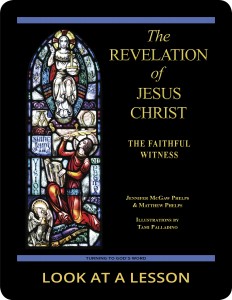judgment
 Jesus talks about the judgment as a looming and unpleasant event in this week’s reading from the Gospel According to Luke 10:13–16 (NABRE). Because of other passages in the Scriptures, we can feel fairly confident that we understand this passage. With further analysis, however, it’s possible that we don’t have quite as clear an idea as we might think.
Jesus talks about the judgment as a looming and unpleasant event in this week’s reading from the Gospel According to Luke 10:13–16 (NABRE). Because of other passages in the Scriptures, we can feel fairly confident that we understand this passage. With further analysis, however, it’s possible that we don’t have quite as clear an idea as we might think.
The Greek word κρίσις (crisis) used to refer to the judgment is from the verb κρίνω (krino), which means “I separate,” “I pick out,” or “I choose.” Judgment, then, is distinguishing, separating, or discerning. Judgment also is a legal concept in Greek, choosing or determining someone’s guilt or innocence. It’s in this legal sense that we want to view the Final Judgment, although many of Jesus’ parables suggest a broader interpretation.
The judgment in the Gospel According to Luke 10:13–16 (NABRE) seems to refer to a final event to which all cities and people will be subject. Based on the Greek meaning, we see that this final event can be either a legal determination of innocence or guilt, or it simply can be a separating or distinguishing of cities or people with no inherent connotation of sentencing. It seems more consistent in this context to view the Final Judgment as a time in which God divides his people into two categories—and the language used provides no immediate idea of what will happen to either.
related topics: apocalypse; left behind; parousia
you also may like our study of the book of Revelation
 The Revelation of Jesus Christ: The Faithful Witness, a 23-lesson Catholic Bible study with an imprimatur, examines ways in which our traditional Christian view of heaven is built on Hebrew apocalyptic visions recorded in the Old Testament. This recently revised study includes maps and additional commentary and takes a close look at the role of the prophets in present-day Christianity. Illustrations by Tami Palladino depict the often-misunderstood images in the book of Revelation. Click on the book’s cover to view a sample lesson.
The Revelation of Jesus Christ: The Faithful Witness, a 23-lesson Catholic Bible study with an imprimatur, examines ways in which our traditional Christian view of heaven is built on Hebrew apocalyptic visions recorded in the Old Testament. This recently revised study includes maps and additional commentary and takes a close look at the role of the prophets in present-day Christianity. Illustrations by Tami Palladino depict the often-misunderstood images in the book of Revelation. Click on the book’s cover to view a sample lesson.
 Click on the picture of the statue of Moses with horns (above) to learn more about Lost in Translation. A new entry is archived each Monday. Contact us to receive Lost in Translation by email every week. You may use any of the contact links on our website to ask Matthew a question.
Click on the picture of the statue of Moses with horns (above) to learn more about Lost in Translation. A new entry is archived each Monday. Contact us to receive Lost in Translation by email every week. You may use any of the contact links on our website to ask Matthew a question.

Leave a Reply
You must be logged in to post a comment.